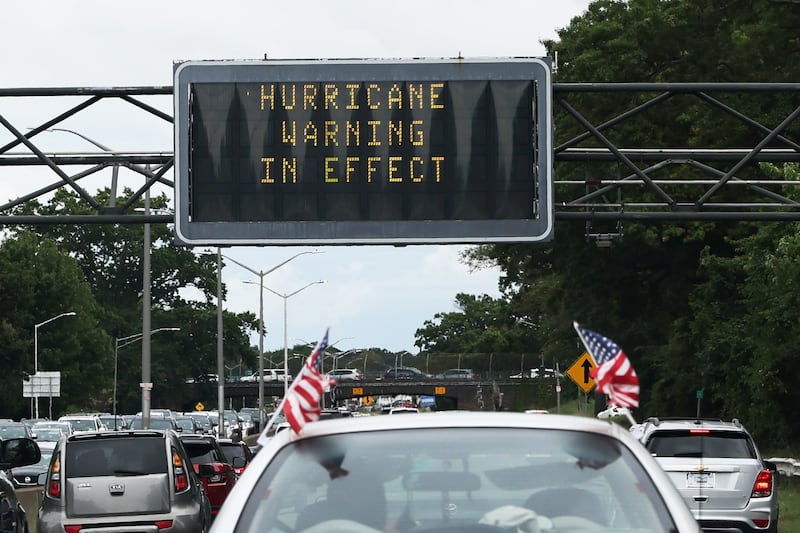Tropical storm Henri, which weakened from a hurricane overnight, made landfall in Rhode Island on Sunday—knocking out power to tens of thousands of people in the northeast.
Flash flooding and storm surge were expected to pose the greatest threat since sustained winds had dropped from 75 mph in the morning to 60 mph when Henri roared ashore around noon.
Even before the storm made landfall, it sparked a record: the rainiest hour in New York City history, with almost 2 inches falling in Central Park between 10 p.m. and 11 p.m.
And even though it was downgraded from a hurricane, Henri still had potential to do damage. “The nerve-wracking thing is seeing pieces of shingles and a gutter flying around,” Cindy Laughlin of Narragansett told CNN.
Authorities have expressed concern about how many people have refused to evacuate, in part because the population is not accustomed to tropical storms.

A road sign flashes a hurricane warning on New York’s Southern State Parkway as Henri bears down.
Michael M Santiago/GettyThe last time a hurricane hit the northeast coast was August 19, 1991. when Hurricane Bob made landfall as a Category 2 hurricane in Block Island, Rhode Island, retreated out to sea and then made landfall as a tropical storm in Newport, Rhode Island a day later. The storm killed at least 18 people and caused extensive damage, amounting to $1.5 billion in 1991 ($2.85 billion in today’s monetary value).
More than 50 million people are under threat from the storm, which has caused cancellations, including a massive “We Love NYC: The Homecoming Concert” in Central Park that had to be suspended after lightning struck during Barry Manilow’s set. Stars including Bruce Springsteen were sidelined after the sudden cancellation.
Rail service is also expected to be suspended between New York and Connecticut as the storm bears down.






